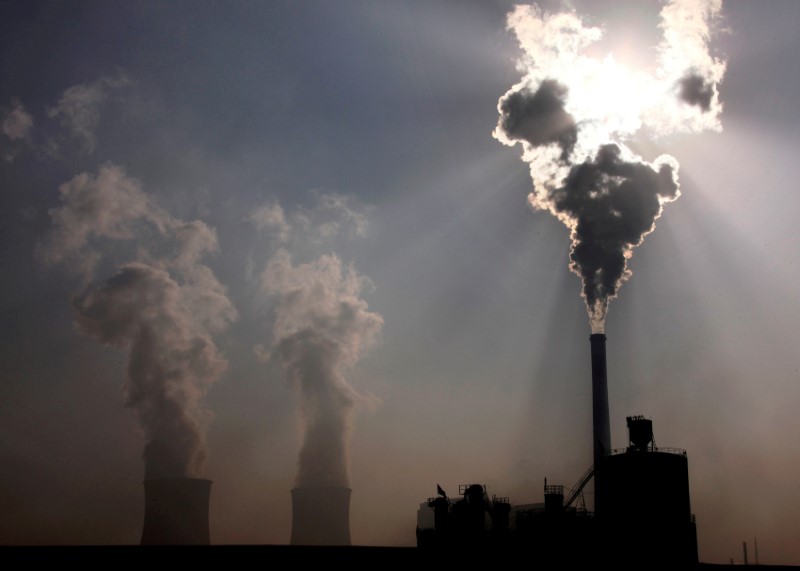 © Reuters. FILE PHOTO: A coal-burning power plant can be seen behind a factory in the city of Baotou, in China’s Inner Mongolia Autonomous Region
© Reuters. FILE PHOTO: A coal-burning power plant can be seen behind a factory in the city of Baotou, in China’s Inner Mongolia Autonomous RegionBy Nina Chestney
LONDON (Reuters) – Global coal demand will be subdued over the next five years, growing at just 0.5 percent a year, marginally higher than current levels, due to lower consumption in China, the International Energy Agency (IEA) said on Monday.
Coal consumption fell last year by 1.9 percent to 5.357 billion tonnes from a year earlier as lower gas prices, a surge in renewables and efficiency improvements dampened demand, the IEA said in its annual coal market report.
Global coal demand is expected to rise by an average rate of 0.5 percent a year to 5.534 billion tonnes by 2022, “only marginally higher than current levels and meaning that coal use all but stagnates for around a decade,” the agency said.
Coal use will decline in Europe, Canada, the United States and China – the world’s largest coal consumer – but rise in southeast Asia, India, Pakistan and Bangladesh.
Over the period to 2022, India’s consumption is seen growing the most at 3.3 percent a year to 605 million tonnes.
Having peaked in 2013, China’s consumption is expected to decline by 0.1 percent a year to 2.787 billion tonnes in 2022 as coal use in the industrial and residential sectors falls due to efforts to improve air quality.
U.S. coal consumption will increase slightly next year then decline to 469 million tonnes by 2022, while EU consumption is expected to fall to 293 million tonnes by 2022.
On the supply side, total global coal supply is expected to increase by 0.8 percent a year to 5.534 billion tonnes in 2020, mainly driven by non-OECD countries.
Coal’s share in the global energy mix is forecast to decline to 26 percent in 2022, compared to 27 percent in 2016, the report said.
After years of decline, coal prices continued to strengthen this year, driven by a sharp cut in Chinese coal output coupled with strong demand across the Asia-Pacific region and in Europe.
European API2 2018 coal futures
Despite high prices in 2016-17, coal project development has been slow. Sluggish demand and uncertain prospects for China and India as well as Korea and Japan have put a brake on investment, the IEA said.
As not much supply has been added over the past year, that in turn has led to price increases.
“Prices will continue to depend largely on China; as a consequence, the structural reform of the Chinese coal industry is key to the evolution in coal prices,” the report said.
Fusion Media or anyone involved with Fusion Media will not accept any liability for loss or damage as a result of reliance on the information including data, quotes, charts and buy/sell signals contained within this website. Please be fully informed regarding the risks and costs associated with trading the financial markets, it is one of the riskiest investment forms possible.
Source: Investing.com




























